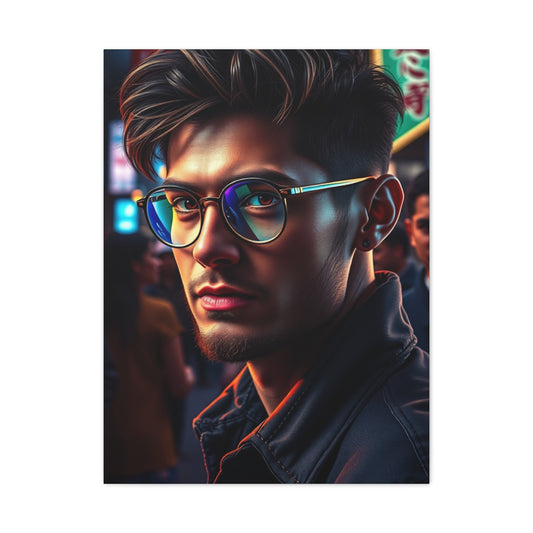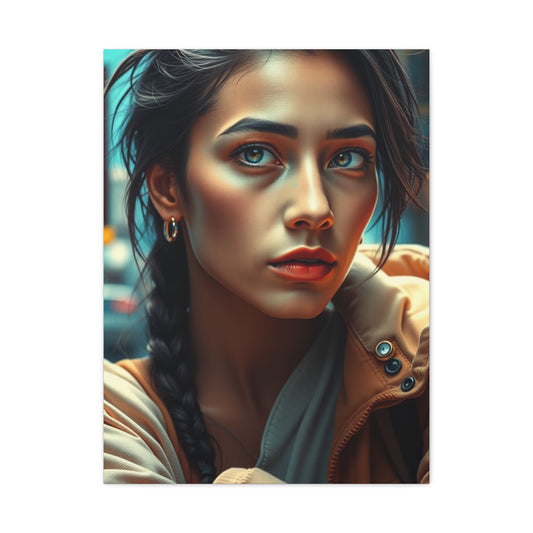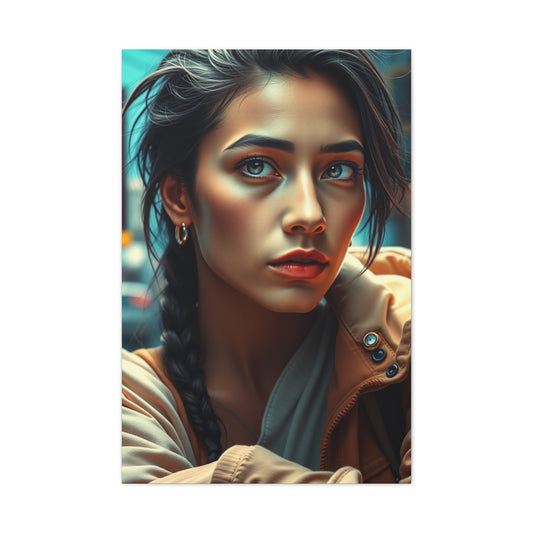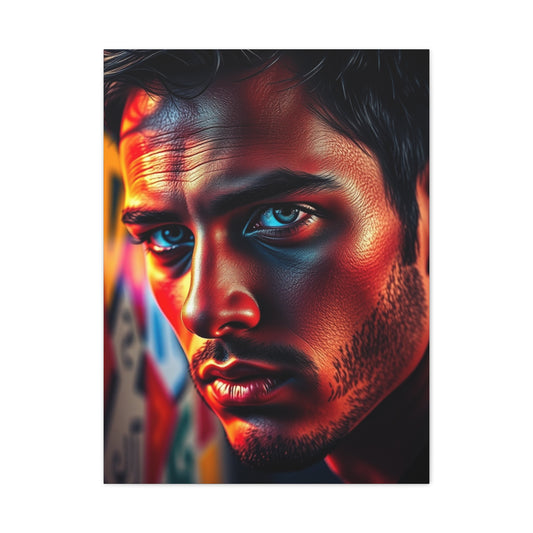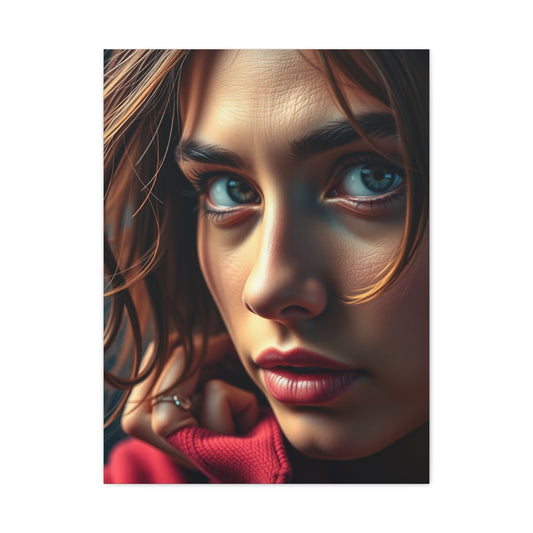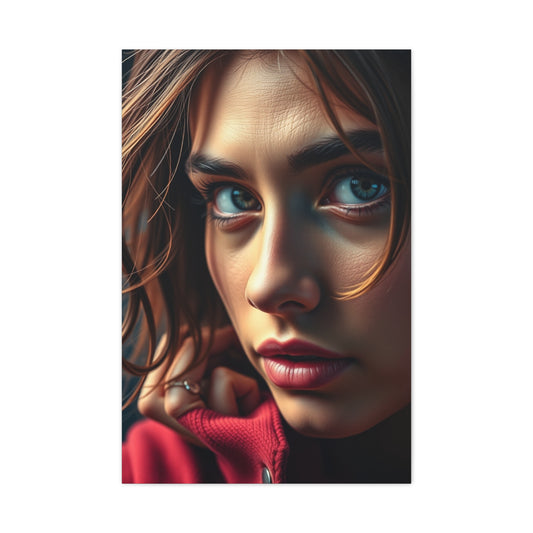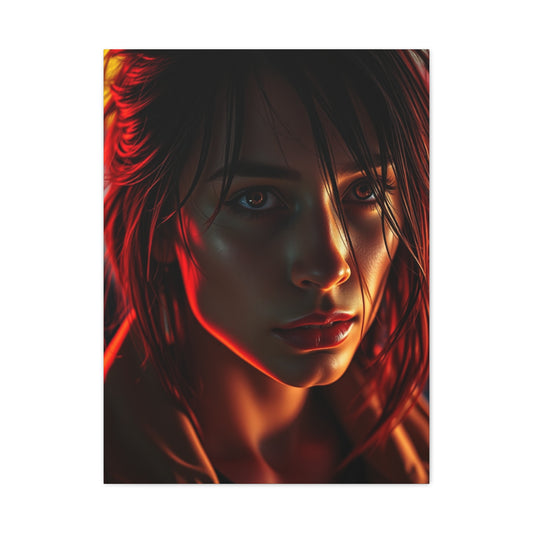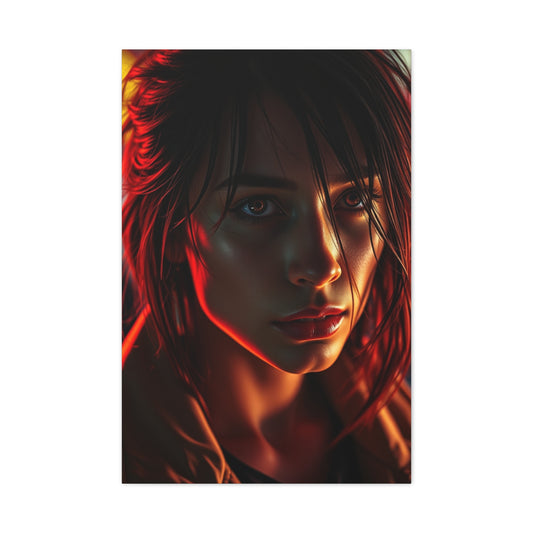Your hallway is one of the most underappreciated spaces in your home, but it holds tremendous potential for making a lasting impression. Often seen merely as a passageway between rooms, your hallway can become a unique and inviting part of your home’s overall aesthetic. Wall art is an excellent way to enhance the look of your hallway, especially considering the space is typically narrow. The right artwork can create visual depth, spark conversations, and tie the room together without overwhelming the space. In this comprehensive guide, we’ll explore expert tips for choosing the perfect wall art and layout for your hallway, ensuring it stands out while maintaining a harmonious flow in your home.
Inspiring Hallway Wall Art Ideas: Enhance Your Space with Creative and Unique Artwork
Hallways are often one of the most overlooked spaces in the home, yet they present a unique opportunity to infuse personality and style into your living space. While hallways are typically narrow and serve as a transitional area between rooms, they can be transformed into striking visual corridors with the right wall art. Choosing the perfect art for your hallway is all about balancing the need for creativity and style with the limited space available. Wall art in the hallway should elevate the space, add character, and create a memorable first impression without overwhelming the area.
In this guide, we’ll explore some of the best hallway wall art ideas that will turn your hallway into a captivating space. Whether you're drawn to contemporary, vintage, or nature-inspired themes, there’s something for everyone to create a cohesive and visually appealing hallway.
The Cosmic Charm of Space Exploration Art
For a truly unique and awe-inspiring hallway art idea, consider incorporating cosmic-themed artwork. One of the standout collections for 2025 is the space exploration series, which features stunning images from the James Webb Space Telescope. These breathtaking images of distant galaxies, nebulae, and star clusters can turn your hallway into a captivating journey through the universe. Cosmic prints don’t just add visual interest; they serve as conversation starters that spark curiosity about the mysteries of space. The deep blues, purples, and vibrant hues in these prints create a sense of grandeur, wonder, and awe.
In a hallway, these cosmic prints can dramatically elevate the space, creating a dynamic focal point. The vastness of space evokes feelings of serenity and awe, allowing your hallway to transition from a simple passageway into a meaningful, thought-provoking space. The celestial beauty of star-studded skies and distant galaxies adds a sophisticated touch to the hallway while engaging visitors with its visual allure.
When decorating with space-themed artwork, it's essential to balance the vibrant colors with neutral surroundings to maintain the right atmosphere. Pair cosmic wall art with earthy textiles such as beige rugs, light-toned curtains, or minimalist furniture. The natural elements of the furniture will enhance the celestial prints, helping to create a balanced and harmonious space. The subtle textures of the textiles also soften the intense colors of the cosmic art, ensuring the room remains peaceful and inviting while still offering a touch of dramatic flair.
|
Related Catagories: |
Vintage-Inspired Art for a Classic Touch
If you're more inclined towards a timeless aesthetic, vintage-inspired wall art is a perfect choice for your hallway. Vintage prints, such as botanical illustrations, old maps, or classic portraits, bring a sense of nostalgia and history to the space. These types of artworks can add a layer of elegance and sophistication while introducing charm and character. Mixing vintage artwork with modern or minimalist decor can create a beautiful contrast that enhances both styles.
For example, pairing vintage botanical prints with sleek, modern furniture is an effective way to create a fresh, modern twist on traditional decor. The delicate, intricate designs in vintage prints, when paired with contemporary pieces, create an intriguing contrast between the old and new. This juxtaposition helps your hallway feel both timeless and current, creating a dynamic aesthetic that catches the eye.
One of the key benefits of vintage-inspired artwork is its versatility. Whether you have a traditional home, a modern space, or an eclectic mix of both, vintage art can be easily incorporated into various interior design styles. The charm of vintage prints can help your hallway feel warm and inviting, welcoming guests with its rich history and artistic value.
Nature-Inspired Art: Bringing the Outdoors In
Another excellent option for hallway wall art is nature-inspired prints. Whether it’s a serene landscape, botanical art, or wildlife photography, nature-themed artwork can bring a refreshing and calming energy to your hallway. Natural scenes, such as rolling hills, lush forests, or tranquil lakes, can instantly transform a narrow hallway into a peaceful retreat.
Botanical prints, in particular, are a popular choice for hallway wall art. Vintage botanical illustrations, featuring detailed depictions of flowers, leaves, and plants, offer a timeless charm that can complement both traditional and contemporary interiors. Alternatively, modern floral prints with minimalist designs can add a more contemporary flair to your hallway.
Nature-inspired artwork also works beautifully when paired with earthy textures. Consider adding greenery to the hallway, such as potted plants or hanging vines, to complement the natural theme of the artwork. The combination of greenery and nature-themed art creates a harmonious and inviting space that brings the outdoors inside, helping to create a serene atmosphere in your hallway.
Personal and Custom Art: Making Your Hallway Unique
Hallways often serve as a reflection of your personal taste and experiences. What better way to add uniqueness to your hallway than by showcasing art that speaks to your personal journey? Personal art could include family portraits, photographs from your travels, or custom artwork that holds sentimental value. These pieces help to make your hallway a meaningful space, one that is not only beautiful but deeply personal.
Family photographs can be displayed in sleek frames along the hallway, offering a warm and personal touch that transforms the space. Alternatively, if you have a collection of art from local artists or pieces that represent your hobbies or passions, displaying these in your hallway can give the space a unique character. Custom art, whether it’s a painting, a commissioned piece, or a digital illustration, can also help tie your hallway decor together while showcasing your individuality.
The key to successfully incorporating personal artwork into your hallway is to maintain balance. Personal art should complement the rest of your decor rather than overpower it. Choosing a consistent color palette and framing style can help create a cohesive look even with varying art pieces, allowing your hallway to feel both personal and stylish.
Geometric and Abstract Art: Adding Modern Flair
For those who prefer a more contemporary, abstract approach, geometric and abstract art are excellent choices for hallway wall decor. Geometric art, with its clean lines, symmetrical patterns, and sharp angles, adds a modern touch to any space. Whether it’s a minimalist design featuring simple geometric shapes or a more complex pattern, geometric art brings a sense of order and structure to the hallway.
Abstract art is also a fantastic option for those looking to add a touch of creativity and individuality to their hallway. These artworks often feature fluid shapes, vibrant colors, and bold patterns that can make a striking impact. Abstract art encourages the viewer to interpret the work, making it an engaging and thought-provoking addition to your hallway. Pairing abstract art with neutral wall colors, such as grey, white, or beige, helps the artwork stand out while maintaining a sense of balance and sophistication.
Geometric and abstract art can be hung in various layouts, from single-panel prints to multi-panel arrangements. These layouts allow you to experiment with the artwork’s placement, creating a dynamic flow through the hallway. Multi-panel art, in particular, is a great way to add visual interest and movement to a narrow hallway, making it feel more expansive and energetic.
Choosing the Right Wall Art for Your Hallway
Decorating your hallway with the right wall art can transform this often-overlooked space into a visually captivating area of your home. Whether you’re drawn to cosmic prints, vintage-inspired art, nature scenes, personal photography, or modern geometric designs, the right artwork will not only elevate the aesthetic of your hallway but also create an inviting and meaningful space.
When selecting hallway wall art, it’s important to consider the layout, size, and colors that will best complement the rest of your home’s decor. By thoughtfully choosing artwork that reflects your unique style, you can turn your hallway into a beautiful and functional part of your home that welcomes guests and enhances your living space. With these inspiring ideas and expert tips, you can confidently curate a hallway that reflects your taste and brings charm and elegance to your home.
Trending Hallway Art Ideas for 2025: Blending Vintage and Modern for a Timeless Look
As we move into 2025, one of the most exciting trends in hallway decor is the blending of vintage and modern elements. This fusion of old and new creates a dynamic and visually interesting aesthetic that makes the most of your hallway's often underutilized space. In fact, a well-curated hallway can serve as a visual journey, showcasing your unique taste while creating a welcoming environment that flows seamlessly into the rest of your home. Wall art plays a critical role in this transformation, offering a chance to experiment with diverse styles and eras. Whether you're drawn to minimalist modern art or nostalgic vintage pieces, combining them in your hallway can elevate the space and provide a visually compelling narrative.
In this article, we’ll dive into trending hallway art ideas for 2025 and explore how blending vintage and modern styles can help you create a curated, cohesive hallway. From curating the right mix of furniture to selecting wall art that complements both, you’ll discover how to strike the perfect balance between old-world charm and contemporary elegance.
The Beauty of Blending Vintage and Modern Elements in Your Hallway
Blending vintage and modern design elements is more than just a trend—it’s an art form that allows you to showcase both your personality and your love for timeless pieces. Combining contemporary furniture, such as sleek tables or minimalist credenzas, with vintage accessories like antique vases, old books, or sculptures, helps create an eclectic yet harmonious look. This curated approach not only makes your hallway visually appealing but also allows you to tell a unique story through the items you choose.
Incorporating wall art into this combination of styles helps to tie everything together, making your hallway feel cohesive while celebrating your personal taste. The contrast between modern and vintage elements can be striking when balanced correctly, creating a visual intrigue that draws visitors into your space. Whether you prefer muted vintage tones or vibrant modern pieces, the integration of both styles brings warmth and personality to what is often a neglected part of the home.
Choosing the Right Wall Art for a Blended Look
When selecting wall art for a hallway that mixes vintage and modern elements, don’t be afraid to experiment with different periods, styles, and mediums. For example, a classic piece of impressionism, such as Van Gogh’s iconic “Starry Night,” pairs beautifully with contemporary, minimalist furniture. This juxtaposition of historical art with modern, clean lines creates a dynamic and cohesive look that feels both timeless and current. The rich textures and vivid colors of impressionist art provide an intriguing contrast to the simplicity of modern decor, highlighting the beauty of both styles.
For a more modern approach, you could incorporate abstract art or geometric wall decor alongside vintage prints. Abstract art, with its bold shapes and colors, contrasts nicely with the organic flow and intricate details often found in vintage pieces. This combination adds complexity to the space without overwhelming it. Geometric wall art, on the other hand, can inject a contemporary, structured look that complements the more fluid and organic lines of vintage art.
The beauty of mixing vintage with modern wall art is that it reflects your personal style. Vintage art often evokes a sense of nostalgia or tradition, while modern art brings energy and innovation to the room. Together, these contrasting elements work in harmony to create a dynamic and welcoming atmosphere in your hallway. Whether you’re drawn to the bright, saturated hues of modern art or the muted tones of vintage works, combining these styles gives your hallway a unique, curated vibe that feels both fresh and familiar.
Popular Wall Art Themes for Blending Old and New Styles
-
Vintage Botanical Prints and Modern Abstracts: Botanical prints have always been a staple in vintage home decor. They capture the beauty of nature with intricate detail and a timeless appeal. When paired with bold modern abstract pieces, these prints bring a sense of balance to your hallway. The natural elements of the botanical prints complement the contemporary edge of the abstract art, creating a visually pleasing contrast that ties the two styles together.
-
Black and White Photography with Contemporary Art: Black-and-white photography has a classic, timeless appeal that pairs well with modern minimalist designs. Whether it's vintage photographs from iconic photographers or contemporary photography with a modern twist, black-and-white prints create a stunning focal point for your hallway. Pair these with minimalist, geometric wall art or contemporary sketches to create a space that feels both artistic and sophisticated.
-
Classic Landscape Paintings with Geometric Prints: A classic landscape painting can evoke feelings of calm and nostalgia, while geometric prints inject a modern, structured aesthetic. By combining these two styles, you can create a hallway that feels welcoming yet full of movement. The key is balancing the calmness of the landscape with the energy of the geometric designs, ensuring that each piece complements the other without overpowering it.
-
Vintage Maps and Minimalist Art: Vintage maps, whether they depict your favorite city or a historical place, add a sense of adventure and nostalgia to your hallway. Pairing these maps with minimalist art can create a fresh and exciting contrast. The map’s intricate details and timeless appeal are balanced by the sleek, simple lines of minimalist artwork, resulting in a hallway that feels both rich in history and forward-looking.
-
Pop Art and Antique Mirrors: A playful way to blend vintage and modern decor is by using pop art alongside antique mirrors. Pop art, with its bold colors and comic-inspired graphics, creates a fun and lively atmosphere. When paired with an antique mirror that adds a touch of old-world charm, you can create an eclectic space that is full of energy and contrast. This fusion of styles allows the boldness of pop art to stand out while the mirror’s vintage design brings a sense of balance and elegance.
Expert Tips for Blending Vintage and Modern Art in Your Hallway
-
Consider Size and Proportion: When combining vintage and modern art, size and proportion are crucial to ensuring that the artwork doesn’t overwhelm the space. In smaller hallways, opt for smaller pieces or a gallery wall that showcases multiple prints. For larger hallways, a single large statement piece can work well to create a focal point, but make sure it doesn’t overpower the space.
-
Mixing Framed and Unframed Art: Experiment with framed and unframed art to create a more dynamic and varied look. Vintage art often looks best in a traditional frame, while modern art can be framed in sleek, minimalist frames or left unframed for a more contemporary feel. The combination of framed and unframed pieces adds layers to the space, giving it a sense of depth and intrigue.
-
Use Color to Tie Everything Together: One way to ensure that your vintage and modern pieces blend seamlessly is by using color as a unifying element. For example, if your vintage art features muted tones like beige or taupe, incorporate similar colors in your modern art or use them in your hallway decor, such as in rugs, throw pillows, or furniture. This ensures a cohesive look that doesn’t feel too disjointed.
-
Balance Visual Weight: Make sure to balance the visual weight of the artwork. For instance, if you choose a large vintage painting, balance it with smaller modern prints or minimalist sketches to avoid overwhelming the space. Conversely, if you opt for bold, abstract art, pair it with lighter, more delicate vintage prints to create harmony.
Curating a Balanced Hallway Art Collection
The key to creating a visually stunning hallway in 2025 lies in blending the old and the new. Whether you choose vintage botanical prints, classic photography, or contemporary abstract designs, the right combination of styles can transform your hallway into a gallery-worthy space. The goal is to create an eclectic but cohesive atmosphere where each piece of art complements the others, adding personality, depth, and visual interest to the hallway. By following these expert tips and experimenting with different combinations, you can craft a hallway that’s uniquely your own, making a lasting impression on anyone who walks through your door. With the perfect mix of vintage and modern art, your hallway will not only reflect your taste but also enhance the overall flow and aesthetic of your home.
Hallway Wall Art for In-Between Spaces: Creating a Seamless and Personal Aesthetic
Hallways are often the most underappreciated spaces in home decor, yet they serve as the connectors between rooms. These in-between spaces may seem like a challenge to decorate, especially considering their narrow dimensions and transitional purpose. However, hallway wall art offers the perfect opportunity to inject personality, create visual interest, and seamlessly tie together the different rooms in your home. Choosing the right wall art can transform a simple passageway into an extension of your home’s aesthetic, reflecting your style while maintaining a functional flow.
In this guide, we’ll explore how to select the right artwork for your hallway. We’ll cover how to make sure your art is personal, yet versatile enough to complement your surrounding decor. Whether you want to introduce personal touches or opt for more subtle, minimalist pieces, we will help you choose the artwork that ensures your hallway feels cohesive and inviting.
Understanding the Role of Hallway Wall Art
A hallway is often a narrow, transitional space between rooms, which means the art you select should not only enhance the area visually but also contribute to the flow of your home’s overall design. The key to hallway wall art is selecting pieces that seamlessly bridge the gap between different rooms. Your hallway art should resonate with the aesthetic of the adjacent spaces, but it can also bring something unique to this often-overlooked space.
While you may be tempted to decorate with bold and large pieces, hallways tend to benefit from more subtle designs. Since the space is narrow and typically shorter, the artwork should enhance the space without crowding it. Minimalist art is a perfect option here, as it maintains visual interest without overwhelming the space. Subtle, neutral tones or monochromatic schemes can give the hallway a sophisticated and calming vibe, helping to create a fluid connection between rooms.
Choosing Personal Yet Versatile Art
Hallways are an excellent space to showcase personal art pieces. These could be family portraits, travel photography, or artwork reflecting your interests and memories. Adding personal art to your hallway can bring warmth and personality, turning this transitional area into a space that feels connected to your lifestyle.
However, it’s essential to strike the right balance when incorporating personal artwork into a hallway. While personal touches are important, you should avoid overwhelming the space with overly busy or distracting designs. Remember, the hallway is a passageway, not the main focus of your home, so the artwork should complement the surroundings without taking too much attention away from the rest of the home.
One way to achieve this balance is by choosing subtle, meaningful pieces that connect to your personal taste but don’t overshadow the rest of your interior decor. A series of family photographs in simple black-and-white frames, for example, can add warmth to the space while blending effortlessly with a neutral hallway design. Similarly, travel photography with soft, muted colors can evoke memories of distant places while maintaining a peaceful atmosphere in the hallway.
Subtle, Minimalist Wall Art: The Perfect Choice for Hallways
Minimalism is often the ideal approach to hallway wall art. The reason minimalist art works well in hallways is that it doesn’t overcrowd the space but still adds visual interest. In a narrow corridor, intricate designs or oversized paintings can make the hallway feel cramped. Instead, choose simple geometric designs, abstract art, or muted-toned paintings that create harmony without overwhelming the viewer.
Consider a series of smaller pieces rather than one large painting, which allows you to fill the wall space without it feeling too busy. Minimalist art can help emphasize clean lines and symmetry, making your hallway appear more expansive and open. Think about abstract paintings with simple shapes, or prints that use a monochromatic palette. Black-and-white prints, for example, are timeless, sophisticated, and adaptable to nearly any home decor.
Additionally, abstract minimalist art, with its clean lines and focus on form, can evoke a sense of calmness. This is particularly important for hallways, where the goal is to create a seamless transition between rooms. The beauty of minimalist art is that it supports the function of the hallway by not taking over the space but still making a noticeable impact.
How to Create a Cohesive Look with Your Hallway Art
One of the most important aspects of hallway wall art is making sure that the art complements the surrounding rooms. The artwork should reflect the overall style and color scheme of your home, allowing the hallway to act as a bridge between spaces. For instance, if your living room features neutral tones, sleek furniture, and a minimalist design, choose hallway wall art that aligns with that aesthetic. You can introduce minimalist art pieces in complementary colors, using grays, whites, and soft pastels that match the tones in the adjacent rooms.
If your home features more eclectic decor, with a mix of colors and textures, you can use your hallway art as a way to introduce a splash of color or a focal point that ties the rooms together. A single piece of colorful artwork can bring life to a neutral hallway, while vintage-inspired pieces can add a sense of nostalgia and warmth, harmonizing with more traditional furniture in the adjacent rooms.
The Power of Color in Hallway Wall Art: Creating Ambiance and Style
Color plays a crucial role in shaping the mood and ambiance of any space, and your hallway is no exception. Hallway wall art offers an incredible opportunity to introduce color into what is often an underappreciated part of the home. The right use of color in your hallway can transform a narrow, neutral passage into a vibrant and welcoming area that flows seamlessly with the rest of your home. When selecting wall art for your hallway, it’s important to think carefully about the colors that will work harmoniously with the existing decor and help create the desired atmosphere.
A thoughtfully chosen color palette in your hallway can enhance the space, making it feel more expansive, cozy, or sophisticated depending on the mood you want to create. Whether you’re aiming for a calm and serene environment or want to inject some personality and energy, color is a powerful tool that can significantly elevate the overall vibe of your hallway.
|
Related Catagories: |
Soft, Neutral Tones for a Calming Ambiance
For hallways that serve as a peaceful transition between rooms, opting for soft, neutral tones in your wall art can help maintain a sense of tranquility and balance. Shades like grey, beige, and soft pastels are perfect for creating a serene environment in your hallway. These muted colors are subtle and elegant, allowing the hallway to feel open and airy, making it feel larger and more inviting than it may be in reality.
Soft greys are particularly effective in modern and minimalist homes, where they contribute to a clean and crisp aesthetic. Pastels such as pale blue, soft pink, and lavender offer a gentle, soothing vibe that is ideal for creating a welcoming atmosphere. These hues allow the artwork to blend harmoniously with your hallway’s neutral walls and flooring, while still adding a touch of sophistication.
Beige and taupe are also great options if you’re looking to introduce warmer tones. These earthy hues create a cozy feel in the hallway, making the space feel more intimate while still being sophisticated and calm. Whether used as a primary color or as a complement to other shades, neutral tones provide an understated elegance that is timeless and versatile.
Introducing Bold Color for Vibrancy and Personality
On the flip side, if you want to add energy and personality to your hallway, introducing bold colors into your wall art can make a significant impact. Artwork with rich hues like emerald green, ruby red, mustard yellow, or even vibrant orange can add depth and character to your hallway, making it feel more lively and engaging.
Bold colors have a unique way of drawing the eye, and when used in moderation, they can create focal points that enhance the design of the space. For example, a bright emerald green print or a deep ruby red piece can serve as the perfect accent to an otherwise neutral hallway, creating a striking contrast without overwhelming the space. The key is balance—adding a pop of color in your artwork ensures your hallway remains fresh and dynamic, without making it feel too chaotic.
Adding vibrant colors can also reflect your personal taste, allowing you to infuse your style into a usually understated area of your home. Whether you choose bold geometric designs, abstract prints, or modern pop art, bright colors can create an exciting atmosphere that energizes your hallway and gives it a unique personality.
The 60-30-10 Color Rule for Hallway Art
When decorating with color, it’s important to maintain harmony and balance. One of the easiest ways to achieve this is by using the 60-30-10 rule, a widely used guideline in interior design. This rule suggests that 60% of your space should be the dominant color, 30% should be a secondary color, and 10% should be used for accents.
For example, if you choose grey as your dominant color in your hallway wall art, it could make up the majority of the color palette, creating a sense of calm and neutrality. Next, you could introduce a secondary color, like pale blue or soft green, to add subtle variety while maintaining the tranquil vibe. Finally, an accent color—such as a vibrant mustard yellow or deep emerald green—could be used sparingly in a single artwork piece, or within frames or accessories. This small but impactful pop of color will not only create visual interest but will also help bring balance to your space.
This method helps prevent the overuse of a single color and ensures that your hallway maintains an organized, cohesive feel, while still showcasing a variety of tones and styles. It provides just the right amount of contrast without making any one color dominate, ensuring a welcoming and sophisticated atmosphere throughout the hallway.
Using Color to Complement the Surrounding Decor
Incorporating the right color in your hallway wall art can also enhance and complement the existing decor in the adjacent rooms. For example, if the adjacent rooms feature warm tones like deep oranges, reds, or yellows, you might want to carry these colors through to your hallway artwork. This will help create a seamless transition from one room to the next, while allowing your hallway to feel like a cohesive part of the home.
Alternatively, if your home follows a more monochromatic or minimalist aesthetic, grey or pastel tones in your hallway wall art can contribute to the overall streamlined look. You could also consider experimenting with color blocking or geometric patterns that contrast with the neutral tones of the hallway. These more modern design elements create a playful yet sophisticated feel, enhancing the transition from one room to the next while keeping the hallway fresh and relevant.
The Role of Accent Colors in Creating Depth
When choosing colors for your hallway wall art, consider how the colors work together to create depth and visual intrigue. Accent colors play a key role in enhancing the space by adding layers and drawing attention to specific areas. For example, a hallway with predominantly neutral tones can benefit from the use of accent colors like gold, copper, or silver in the artwork. These metallic tones can add a touch of luxury and elegance while still maintaining a relaxed atmosphere.
Similarly, combining cool and warm colors in your artwork can help to balance the hallway’s design. For example, you could pair a cool-toned blue or green with a warm accent of terracotta or mustard yellow. This combination creates depth and draws the eye to different elements within the hallway, ensuring that the space feels dynamic and inviting.
Creating the Right Color Palette for Your Hallway
Color plays a significant role in setting the tone for your hallway. Whether you opt for soft, neutral tones for a calming, serene atmosphere or bold, vibrant hues for a more dynamic and energetic space, the colors you choose for your wall art can transform your hallway into a visually stunning part of your home. By following the 60-30-10 rule and considering how the colors complement your overall home decor, you can ensure that your hallway wall art enhances the space while creating a seamless transition between rooms. Whether you prefer minimalist designs in calming shades or bold, statement-making artwork, the right color palette will help bring your hallway to life and make it a standout feature in your home.
The Importance of Proportions in Hallway Wall Art
Because hallways are often narrow and compact, the size of the artwork you choose is incredibly important. Artwork that is too large can overpower the space, while pieces that are too small can get lost in the wall. A good rule of thumb is that your hallway wall art should take up about 60% to 75% of the available wall space that isn't covered by furniture. This ensures that the art fills the space appropriately, without making the hallway feel crowded.
If your hallway is particularly narrow, opt for vertical artwork, which can help elongate the space and draw the eye upwards. For wider hallways, horizontal or panoramic prints work well, as they help balance the proportions of the space. When choosing multi-panel artwork, such as a triptych or a set of smaller prints, make sure the gaps between the panels are consistent—ideally around 1 inch—to maintain visual cohesion.
Personalizing Your Hallway Art
The beauty of hallway art is that it offers a great opportunity to express your personal style while still maintaining a functional and cohesive space. Displaying personal artwork, such as family photos, favorite quotes, or memories from travels, can bring a sense of warmth and personal connection to the hallway. However, it’s important to keep the designs simple and subtle, allowing the space to feel inviting rather than overwhelming.
A series of photographs in matching frames, a collection of abstract paintings, or a curated set of black-and-white prints can all add a personal touch without compromising the overall feel of the space. Remember, the goal is to create a hallway that’s visually engaging and cohesive with the rest of your home, so choose pieces that reflect your personality while maintaining harmony with your decor.
Bringing Personality and Flow to Your Hallway
Hallways may be small and transitional, but they offer a unique opportunity to experiment with wall art that connects your home’s different spaces. The right wall art not only enhances the hallway itself but also helps create a fluid connection between rooms. Whether you prefer minimalist art, vintage prints, or personal photographs, the key is to select artwork that complements your home’s overall aesthetic and makes your hallway feel like an extension of the rest of your living space.
By choosing subtle, cohesive designs and experimenting with different colors, sizes, and layouts, you can create a hallway that feels inviting, unique, and beautifully integrated into the rest of your home. The art you choose can serve as a reflection of your style, personality, and creativity, turning your hallway from a forgotten passageway into an integral and dynamic part of your home.
Hallway Art Layouts: The Ideal Shapes and Arrangements
When it comes to hallway art, the layout plays a crucial role in determining the overall look and feel. The narrow and elongated nature of hallways means the artwork must be carefully selected to enhance the space rather than overwhelm it. Here are some popular shapes and arrangements to consider when choosing artwork for your hallway:
-
Classic and Sleek: A single-panel rectangle or square canvas works well for narrow hallways. This layout provides a clean, minimalist look that doesn’t overpower the space while still making an impact.
-
Contemporary Touch: Vertical canvases or panoramic prints can add height and dimension to your hallway. These layouts work well for creating a sophisticated and modern aesthetic in smaller or taller hallways.
-
Symmetrical Appeal: A triptych (three-panel) or symmetrical five-panel layout creates balance and harmony, making it ideal for larger hallways. The symmetry helps organize the space and adds visual order.
-
Dynamic and Bold: A two-piece or four-panel “wave” canvas layout introduces movement to the space, adding energy and flow to your hallway. This arrangement works well in more contemporary settings.
-
Fun and Eclectic: If you want something bold and unique, try a seven-piece hexagonal canvas set. The playful layout will add intrigue and charm to your hallway, becoming a striking focal point.
These various layouts can significantly enhance your hallway by adding dimension and movement. When hanging multi-panel art, ensure that the panels are spaced evenly to maintain a cohesive look. This will allow the artwork to flow naturally and add a dynamic element to your hallway.
Size Matters: Choosing the Right Dimensions for Hallway Art
Choosing the right size for your hallway art is essential in creating a balanced and harmonious space. Artwork that is too small for the wall will appear insignificant, while oversized pieces can make the hallway feel cramped. Here are some tips for choosing the right size:
-
For Long Hallways: Large canvas prints measuring 36" x 75" are perfect for creating a polished look. These dimensions are ideal for long, narrow hallways and will ensure the artwork fills the space without overwhelming it.
-
For Empty Wall Spaces: Ideally, your art should occupy 60% to 75% of the available empty wall space. To calculate the best size for your wall, measure the height and width of the empty area, then multiply both dimensions by 0.6 and 0.75.
-
Above Furniture: When hanging art above furniture, such as a console table or bench, the artwork should span about 2/3 to 3/4 of the width of the furniture for a visually pleasing effect.
Selecting the right size ensures that your hallway art complements the space and feels well-proportioned, adding depth and balance without overwhelming the narrow space.
Adding Color to Your Hallway with Art
Color plays a critical role in creating a welcoming and inviting hallway. The right artwork can infuse color into the space, whether you prefer bold, vibrant hues or more muted, subtle tones. Here are some tips for adding color through hallway art:
-
Bold and Bright: Use art with vibrant colors such as yellow, red, or teal to energize your hallway. These colors will create an eye-catching statement and inject personality into the space.
-
Neutral and Subtle: If you prefer a more calming effect, opt for grey, beige, or soft pastel tones. These colors will maintain a peaceful atmosphere while adding visual depth and interest.
Pro Tip: Use the 60-30-10 rule when choosing your hallway color palette. This rule suggests using 60% of a dominant color, 30% of a secondary color, and 10% of an accent color to create a well-balanced and cohesive look.
Conclusion
Your hallway is a great space to showcase wall art and elevate the overall design of your home. From choosing the right dimensions and layouts to adding color and personal flair, there are endless possibilities for hallway decor. Whether you prefer sleek, modern designs, vintage-inspired pieces, or vibrant art that makes a statement, the right artwork will transform your hallway into an inviting and visually appealing space. By following expert tips and exploring creative ideas, you can make your hallway a standout feature that enhances the flow of your home.










